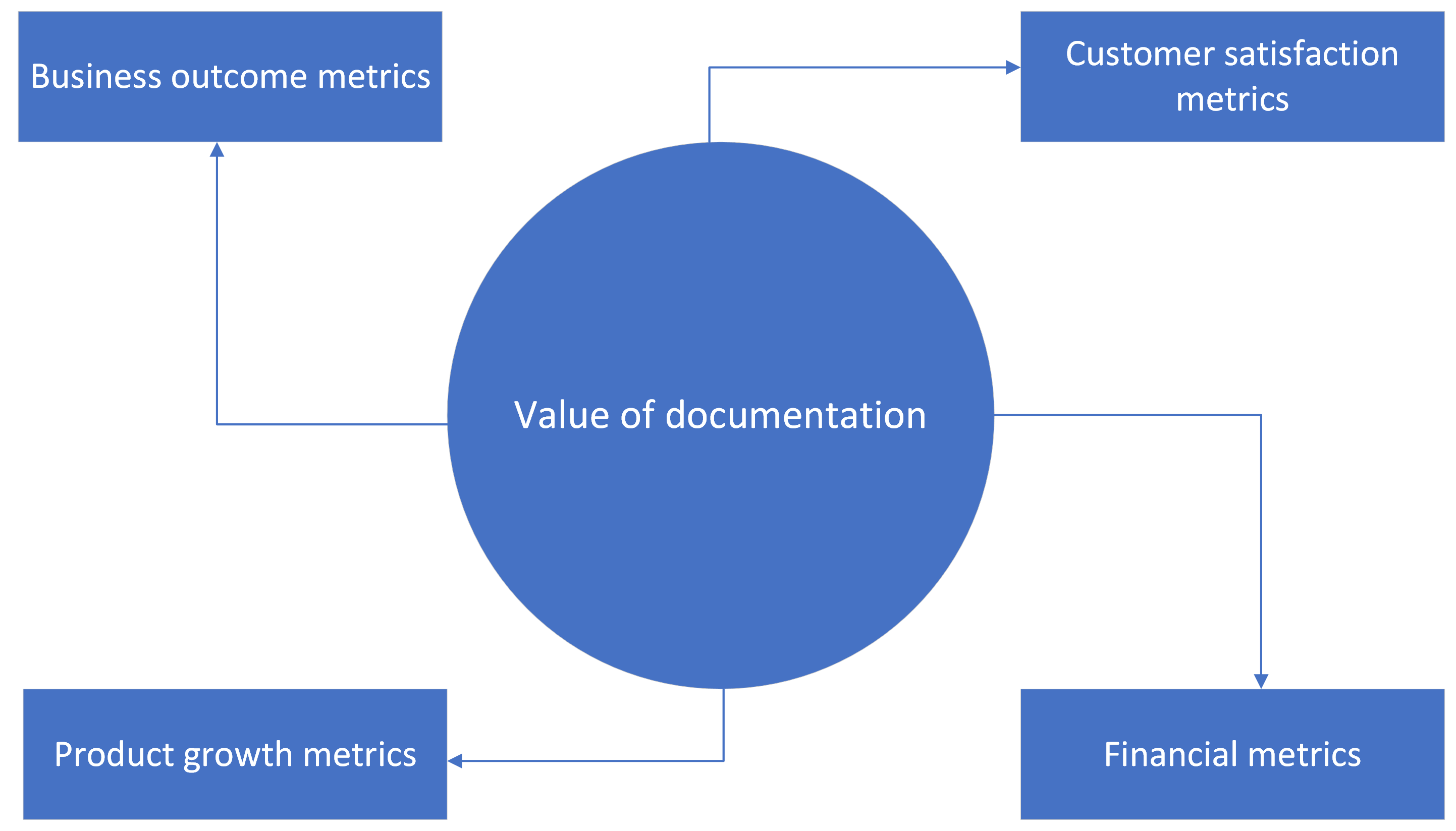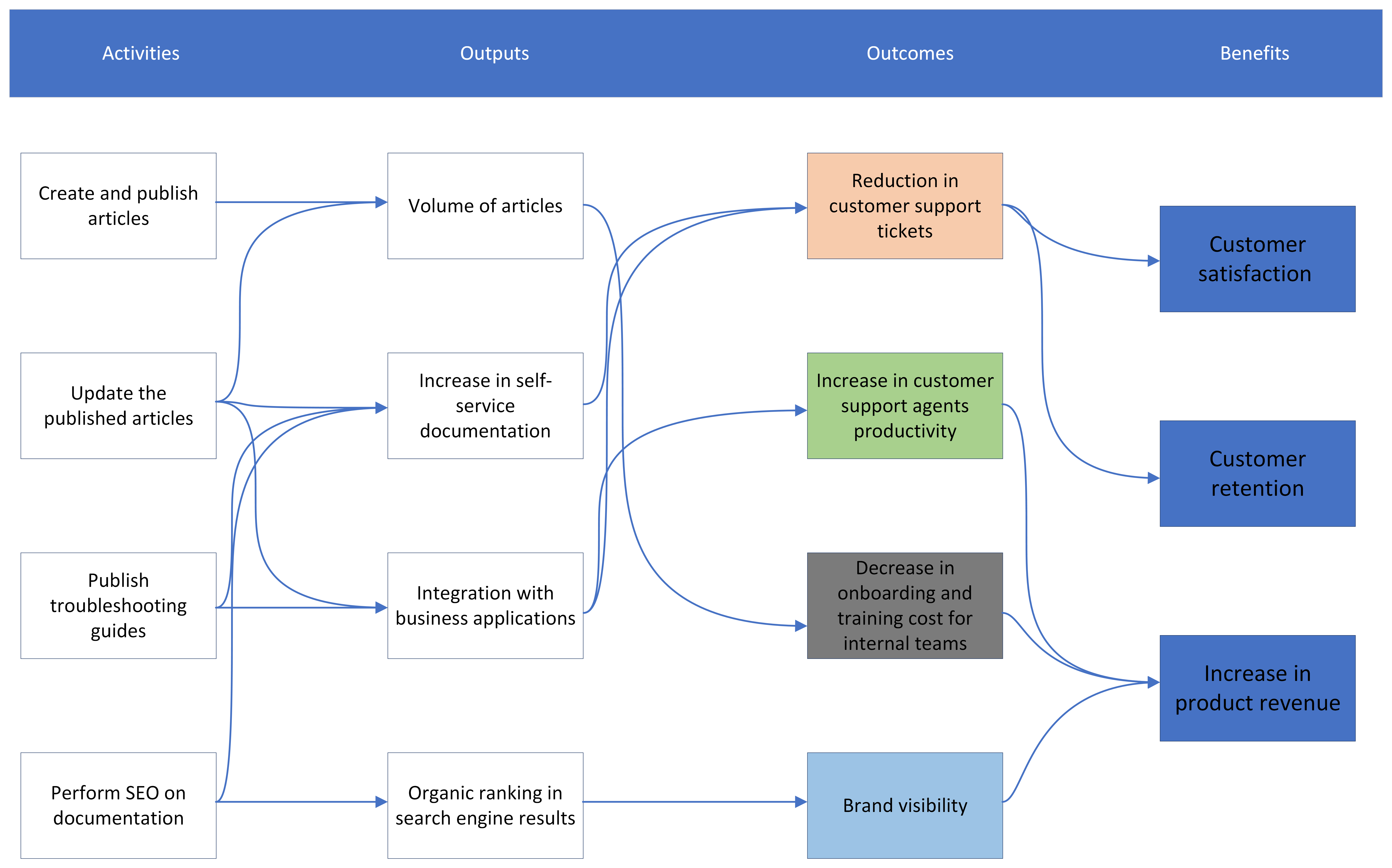The definition of value means generating a greater return on investment than the cost of the initial investment. Over the years, many products and service-oriented companies hired technical writers to produce documentation to accompany their software products or any services they offer. The company’s intent in producing documentation is to help its customers to configure their products and troubleshoot in case of any issues.
The general myth amongst traditional product and service-oriented companies is that documentation offers less value. Some traditional companies consider documentation an add-on and associate it with a cost center. Hiring professional technical writers is considered a cost to the company rather than an investment in those old-style companies.
Thus, this makes an excellent case to formulate a framework whereby the business value proposition of documentation is amplified, and technical writers have metrics to showcase their business contributions.
Why do we need to measure the value of documentation?
The documentation contains product features, service procedures, troubleshooting guides, user manuals, standard operating procedures, help docs, and FAQs. Documentation plays a vital role in customer trust in products and services. If incorrect information is present in the documentation, it increases customer frustration leading to customer churn. It becomes obvious that it is easy to provide documentation as part of product offerings as customers get the exact information they need at the right time.
Measuring the value of documentation is indispensable to quantify the documentation team’s efforts in business outcomes and metrics. The long-term benefits of documentation can be substantiated using data and metrics. Measuring the documentation value helps shift the company’s mindset about documentation as an essential component of the software product/services rather than a fancy add-on.
Read More: A Comprehensive Guide to Creating a Policy and Procedure Manual
What are the metrics to quantify?
To quantify the value-add of a documentation team, we need to use evidence to quantify the business impacts. It is easy to produce evidence through data collected through various business interactions/transactions involving the documentation team. The metrics to quantify the business value proposition of the documentation team can be categorized under three groups
- Business outcome metrics – Metrics used to calculate the business impact
- Customer satisfaction – Metrics used to compute customer satisfaction
- Financial metrics – Measures applied to assess financial gains of documentation

Business outcome metrics
In a software product company, the business outcomes metrics for measuring the value of documentation consist of
1. Reduction in customer support tickets
As your software product grows, the customer support team function is indispensable for customer satisfaction and customer retention. The documentation is essential for the customer support team to deliver their day-to-day operations to help customers. If inaccurate information is present in documentation, it may lead to customer frustration. The unsatisfied customer would raise a support ticket that would make your customer support take more effort to close those customer support tickets. This increases your business operating cost as the volume of support tickets increases.
If the documentation helps the customers to self-serve, then the documentation deflects a lot of customer support tickets being raised. Thus, one of the key business outcome metrics to track over time is the reduction in customer support tickets.
First, take all the historic customer support ticket data before the introduction of documentation, then track the reduction in the customer support ticket correlating with documentation article views and so on. This metric should show a decreasing trend over time and be normalized to ensure its effectiveness.
2. Decrease in time to respond to customer feedback
If the customer leaves feedback on your documentation, it becomes easier for your internal team to respond to the feedback quickly because of quick access to necessary details in the documentation. Your business is keenly perceived as customer-centric if you respond to customer feedback quickly. This metric can be computed by measuring the timestamp difference between the time in which customer feedback was received and responded to.
3. Increase in productivity of customer support agents
Having good documentation increases the productivity of your customer support agents as it takes less time to find information to resolve customer issues. The metric to track is the median response time to resolve support tickets/calls per week.
4. Customers require less training cost
The product documentation helps your customers train their internal teams on your product, thus reducing the training cost for your customers. Liaising with your customer to get this metric would amplify the efforts of the documentation team.
5. Customer satisfaction
The documentation is produced to satisfy the needs of your customers. Customer satisfaction metrics dominate the executive-level discussion and having documentation as a measure to enhance customer satisfaction would be well-perceived. This also enables executives to change their mindset and invest in the documentation team
-
- Customer satisfaction via surveys
- NPS score
An intuitive knowledge base software to easily add your content and integrate it with any application. Give Document360 a try!
GET STARTED
Also read: DocOps: Consistent Documentation for your Business Success
Financial metrics
Financial metrics speak stronger than words, as currency is the standard way to measure value. Financial metrics are crucial in justifying investment into documentation in terms of hiring technical writers, procuring SaaS-hosted documentation platforms, buying tools for technical writers, and so on. It is hard to attribute documentation to product revenue growth as documentation is an enabler. However, it is easy to measure cost savings of documentation in terms of
1. Reduction in operating cost
As your product scales, keeping the operating cost linear is important so that your gross margin increases exponentially. The operating cost usually goes up as spending on customer support increases. The best option to reduce operating costs in your customer support team is to build comprehensive documentation such that
-
- Self-service documentation could deflect customer support tickets
- Customer support agents can focus on high-value and high-priority support tickets
A problem with accounting systems is that they still track costs by department, not by project. If customer support costs go down, the customer support group looks good. The documentation group doesn’t get any credit for reducing support costs, even if good documentation contributed substantially to the reduction.
Suppose technical writers’ efforts materialize in the reduction of customer support call volumes by x percent. In that case, the cost per support agent to resolve support reduces significantly, and savings in estimate could be very substantial. The unit cost to serve a ticket should decrease over a period after the introduction of documentation.
2. Reduction in human resources
The documentation team should be incentivized if the customer support team size is not growing exponentially with respect to product growth. It is a good metric to track the ratio of customer support agents per technical writer.
Check out How Document360 helped Whatfix streamline its documentation process:
How do we measure the business impact of documentation?
Documentation is a strategic investment for a product company. Measuring the impact of this investment is important for business continuity and customer experience. To measure the value of documentation, the aforementioned metrics offer insights into business impact. To calculate these metrics, we need to collect data from
-
- Customer support management system
- Customer chat system
- Internal financial system
- Internal human resources system
- Customer Success platform
The below benefit map shows the attribution of technical writers’ activity to long-term business impact.

Over time, there will not be much change in the metrics because all those proposed value metrics will operate optimally as your documentation is operating at maximum efficiency. In that scenario, the focus should be on the value-added activities of the documentation team in terms of product marketing, training materials, and so on.
Conclusion
Measuring the value of documentation helps to measure business efficiency (internal) and customer satisfaction (external). This helps to gauge and benchmark the documentation team’s contribution to company’s bottom line and brand value. The proposed framework helps you understand and improve the business impact of good documentation.





 –
– 

